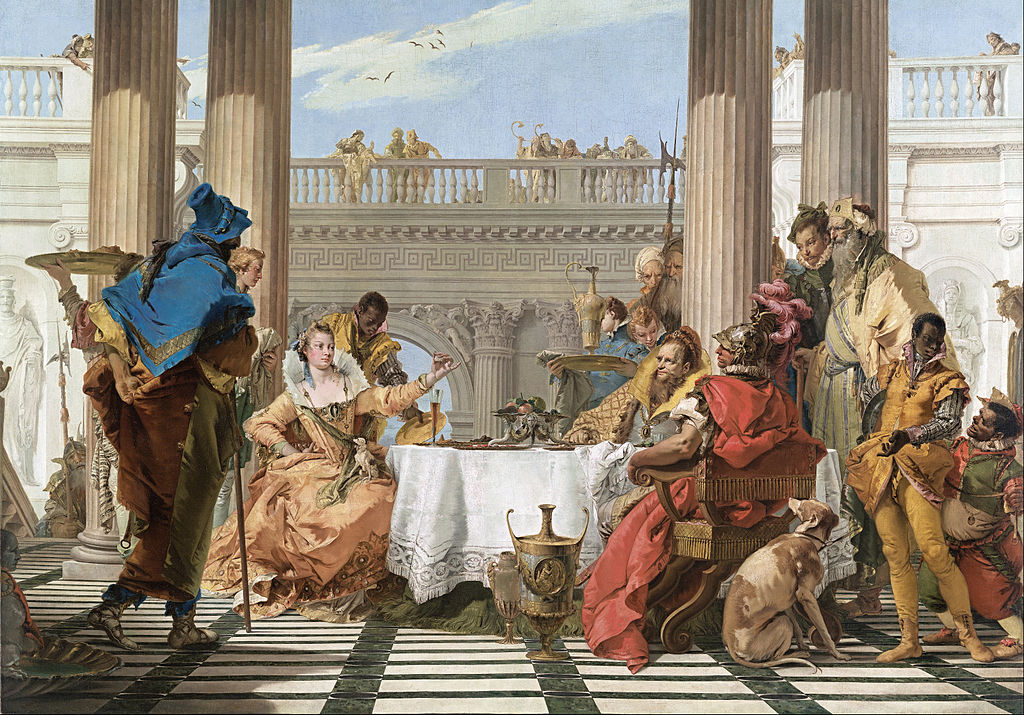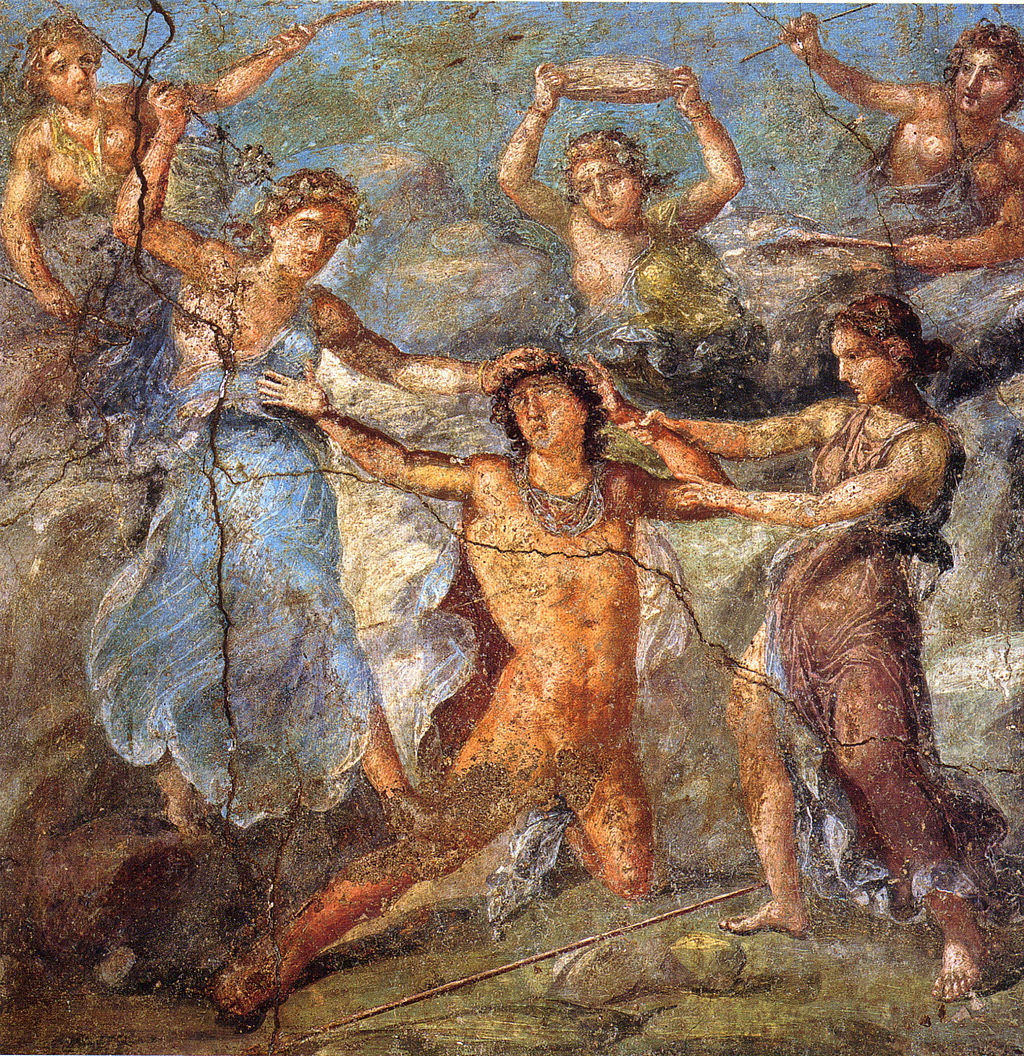Everyone has heard of Cleopatra, Queen of Egypt (or more formally Cleopatra VII, Queen of the Ptolemaic Kingdom from 51 BC to 30 BC). Her complicated and in some ways tragic life is perceived mainly through the prism of her love story with the Roman commander Mark Anthony. But the real Cleopatrawas much more than Mark Anthony’s lover. Here all is explained.
The Banquet of Cleopatra by Giovanni Battista Tiepolo, 1743-44
Origins
Who was Cleopatra? To begin with, Cleopatra did not descend from Egyptians. At the time of her birth, Egypt had been ruled by the Macedonian dynasty of Ptolemies, from which Cleopatra originated, for centuries. The founder of the dynasty was Ptolemy I, who became Pharaoh after Alexander IV, son of Alexander the Great.
It was customary for the Ptolemies to marry relatives. So, in general, the family remained Macedonian. The first two co-rulers with Cleopatra were her own brothers Ptolemy XIII and Ptolemy XIV.
Appearance
Beauty is a subjective thing, and what is more, beauty standards are changeable. It is very doubtful that Cleopatra looked like Vivien Leigh, Sophia Loren or Elizabeth Taylor, who played her in various acting roles.
Some of Cleopatra's contemporaries did not consider her beautiful but noted that because of her intelligence she got what she wanted. As Plutarch thought, Cleopatra’s beautycouldn’t be described as incomparable and striking at first sight, but her appeal was distinguished by irresistible charm.
We could even say that the main attributes of Cleopatra were not beauty, but a sharp mind and charisma.
Childhood and Youth
When Cleopatra was only 12 years old, her father, Ptolemy XII, was overthrown and expelled from Egypt, and his eldest daughter Berenice sat on the throne. A few years later Ptolemy XII regained power, with the support of the Roman governor of Syria, Gabinius. On taking power, he not only killed Berenice but also massacred many of her supporters. Ptolemy became dependent on his Roman allies and their troops leading Egypt to lose some of its power and having an increasing dependence on Rome.
After Ptolemy XII’s death in 51 BC, Cleopatra's brother, Ptolemy XIII, became Pharaoh even though he was only 9 years old. Cleopatra married him, and as a result, the 18-year-old girl was head of state. But her brother was quickly growing up and becoming more powerful, and in 48 BC, with the help of his noble supporters, he tried to oust Cleopatra to become sole Pharaoh.
And here her solid character first appeared. She fled to Syria, where she hired an army that defeated her brother’s army. It was at that moment that the Romans intervened in the Egyptian game of thrones.
Caesar Arrived
In Rome, there was also a power struggle between Julius Caesar and Gnaeus Pompeius (or Pompey the Great). After Caesar defeated Pompey's troops at the Battle of Pharsalus in 48 BC, Pompey fled to Egypt. Young Ptolemy XIII, wanting to improve relations with Caesar, killed Pompey after he set foot on Egyptian soil. But the Pharaoh miscalculated. Caesar was not happy about this and arrived in Egypt to bury his former enemy.
Wanting to remove Ptolemy XIII from the throne, Caesar relied on Cleopatra and came into the conflict on her side. In January 47 BC Ptolemy's forces were defeated at the Battle of the Nile, and he then drowned in the River Nile. Cleopatra again became ruler of Egypt under the Roman protectorate. Her official husband was another younger brother, Ptolemy XIV, and she had an affair with Caesar. Julius Caesar and Cleopatrahad a son, Caesarion, or Ptolemy XV, the same year.
But in 44 BC Caesar was killed by conspirators. After that, there was more political turmoil in Rome. Cleopatra, also in Rome at the time, urgently left for Egypt. Upon her arrival, Ptolemy XIV mysteriously died. According to one version of events, she poisoned him, because now she had a son who could become co-regent.
Mark Anthony and Octavian won the Roman civil war in Rome, and Anthony got the eastern Roman lands, including Egypt. For Cleopatra, it was time to act.
It has been the subject of much debate as to whether she initially had real feelings towards Mark Anthony or not. Upon learning that Anthony loved luxury, she arrived on a ship with a gilded stern, purple sails, and silvered oars. Of course, she made an impression on him, and then started one of history’s great love stories.
For several years Mark Anthony and Cleopatra lived carefree, decadent lives, with feasts and drinking parties, although there were wars and various conflicts over the period.
But the political situation in Rome again deteriorated and a power struggle ensued between Mark Anthony and Octavian, and this eventually led to another Roman civil war. In 32 BC Octavian ‘Augustus’ declared war against Anthony. The battles in the war began in 31 BC.
Death
The war went from strength to strength for Octavian Augustus from 31 BC to 30 BC. Having overcome Anthony and Cleopatra in battles in Greece, he attacked them in Egypt.
By August of 30 BC it had become clear that it was all over. On August 1, Mark Anthony thought that Cleopatra was dead, and killed himself with his sword. But Cleopatra was not dead and he died in her arms.
But the queen herself was not in a hurry to die. She apparently hoped to negotiate with Octavian, and maybe even seduce him. But Cleopatra's charisma did not impress Octavian and she came to understand that she would be paraded in Rome as a prisoner, something that she would not stand.
Contrary to popular belief, Cleopatra died by taking poison, not from a longing for Mark Anthony. To avoid the shame of being paraded, Cleopatra decided to commit suicide. But cunning Octavian, who wanted to lead the queen triumphantly through Rome’s streets, put a round-the-clock watch on her, to ensure that Cleopatra was not brought poison or a knife. But Cleopatra had other ideas. While there are several theories as to how she killed herself, a popular one is that in a basket with figs, she was brought a poisonous snake, the bite of which ended the life of the legendary queen.
Cleopatra died on August 12, 30 BC.
What do you think of Cleopatra? Let us know below.
This article was brought to you by Custom Writings.
Editor’s note: That external link is not affiliated in any way with this website. Please see the link herefor more information about external links.
References
https://www.doaks.org/resources/online-exhibits/gods-regents-on-earth-a-thousand-years-of-byzantine-imperial-seals/imperial-dynasties/the-macedonian-dynasty-86220131056
https://www.stylecraze.com/articles/cleopatra-beauty-secrets/#gref
https://www.livius.org/sources/content/plutarch/plutarchs-caesar/caesar-and-pompey/
http://edition.cnn.com/2010/WORLD/europe/06/30/cleopatra.suicide/index.html
http://penelope.uchicago.edu/~grout/encyclopaedia_romana/miscellanea/cleopatra/bust.html

















